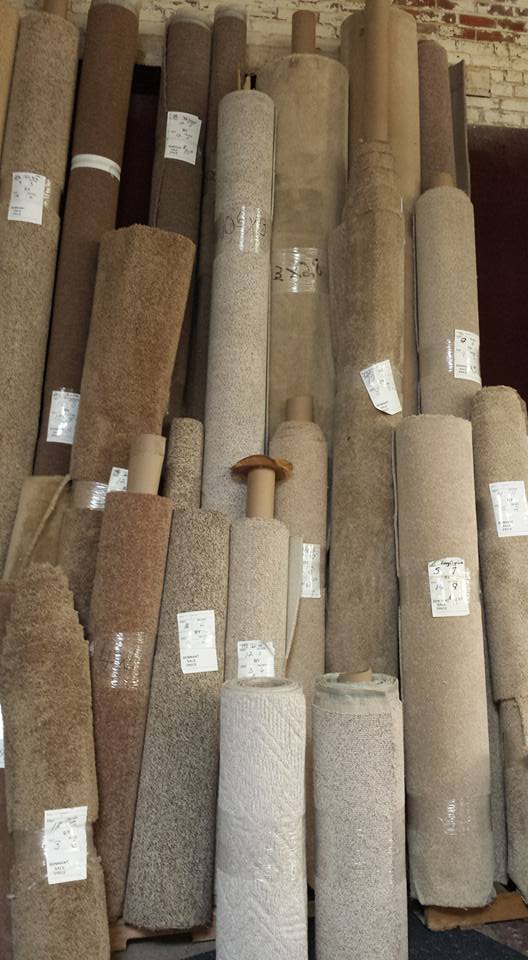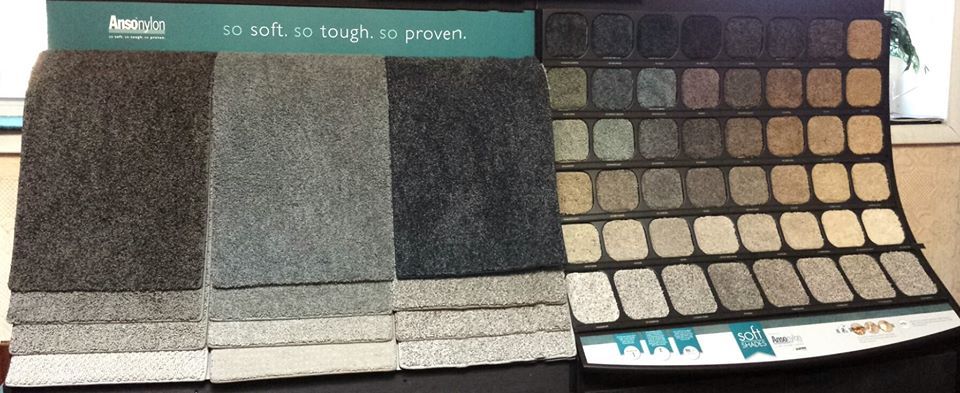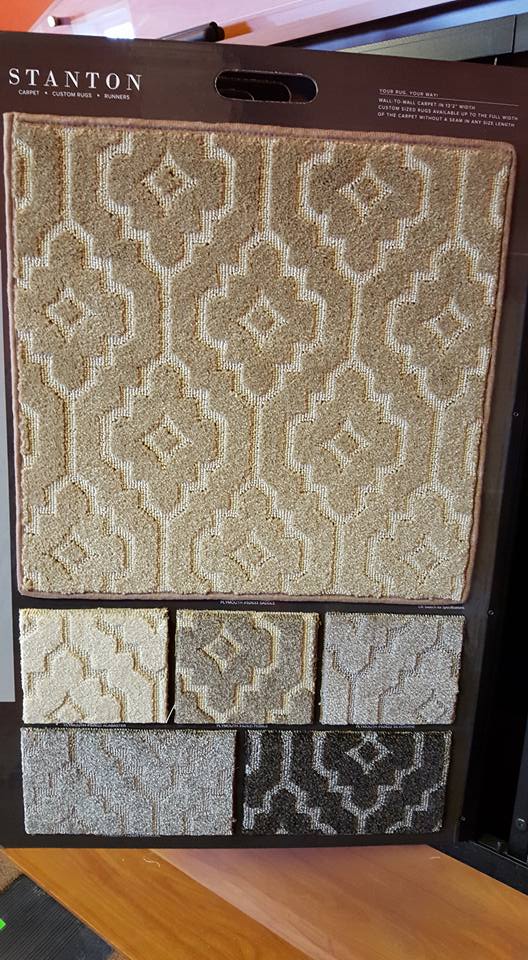Choose the Right Carpet for Your Home or Business Building
The three issues to consider in carpet selection are fashion, durability and price. They are three distinctly different things. Durable carpet isn’t necessarily expensive, and expensive carpet isn’t necessarily durable. Fashionable carpet is most often more expensive and less durable. The first step is to evaluate where your project fits into that triangle and what will best work with your needs.
What You Need to Know About Choosing a Carpet
Wear
Getting the most out of your carpet starts with a design that considers what the area will be used for in addition to how you want it to look. The heavier the traffic load, the more impact it should have on the material selection.
Wear on carpet escalates as the following conditions increase:
1. The more people in the area.
2. The more hours per day they are there.
3. The smaller the area.
4. The more furniture.
5. The more often it is cleaned.
6. The more pets run on it.
7. The more wheeled devices roll on it.
In absence of any of the other factors, two working adults would constitute a light load. A family with three children in a 1,200 square foot house would be a heavy load. Add some extra furniture and a German shepherd and you have a carpet nightmare!
Don’t forget to evaluate your future plans when choosing a carpet. A quality carpet will be with you for many years to come. A white carpet may look beautiful in the dining room of a newlywed couple choosing carpet today for their first home but could prove to be a stain magnet with young children a few years down the road.
Carpet seldom wears until the yarn disappears. Long before that it will become stained, matted or both. If you have a bad traffic situation, your choices of material can help mitigate the problem.
Yarn Properties
Yarns that are dyed while they are a liquid like polypropelene or olefin will clean much better than yarns that are dyed after they are extruded from plastic to yarn. The down side to olefin and polypropelene is they are softer and will matt more quickly than nylon when made in a cut pile construction. They are good choices for low, tightly woven loops like Berbers and commercial loops. They are bad choices for cut pile materials that must stand up to maintain a good appearance.
Stains and Matting
If staining will be an issue, carpets with low profile loops made of Polypropelene or Olefin work well. Theses short, dense materials also help to avoid matting problems.
Cut pile carpet performs better when made of nylon, yet stains are more difficult to remove. If you must have a cut pile in a high traffic area, choose low pile height, dense construction to avoid matting.
Stains are less predictable and more variable than the matting problem, so they are more difficult to deal with from a decorating perspective. Multi-colored carpet hides stains better than solids. If you have any idea what might get on the carpet, minimizing the contrast between the stain and the carpet will lessen the problem. If you run a pizza parlor, a red, green and brown multi-color would be a good choice. If you are carpeting an office where there is crushed concrete in the driveway, shades of gray would make the dirt less noticeable. If you hallway is routinely tramped across in baseball cleats and tennis shoes, you might want to opt for a pattern with terra cotta colors.
Stain resistant carpets can minimize the potential for damage, but all products are not created equal. Fluorocarbon stain treatments have been on the market for a few years and have been highly promoted by the chemical companies that make carpet yarn. We put six common household stains on the leading brands. They were cleaned using the manufacturer’s suggested procedure. While the treatments were an improvement against some kinds of stains, they did not come close to what would be expected after seeing the advertisements.
Only one of the carpets in the test cleaned well enough to say it “passed” the test, and it has no stain treatment at all. The Olefin not only did not show the stains, it withstood bleaching too.
Environmental Impact
If you are concerned about lessening your negative impact on the planet and reducing your carbon footprint, there are many environmentally friendly flooring options.
Shaw runs its Green Edge Initiative to help negate its impact on the environment. Shaw keeps 30 million pounds of waste out of our landfills each year through its nationwide carpet recycling program and by reducing packaging by as much as 98% (plus they then recycle the remaining packaging). Shaw offers carpets made from recycled materials, hardwood floors from certified sustainable sources, and converts waste products into an energy source for some of its factories. Mohawk designs carpet made from recycled PET plastic bottles and doormats made from old tires. Mohawk has been given the Evergreen Award by the United States General Services Administration for its commitment to reduce emissions and waste is all aspects of its manufacturing process. Beaulieu offers its Second Nature line of beautiful carpets made from recycled plastic.
At Carpet Mill Outlet, we specialize in the sale and installation of products from Shaw, Mohawk and Beaulieu as well as beautiful, durable and renewable source bamboo hardwood floors.
For more information, you can visit our manufacturers’ websites or come into our showroom for a consultation with one of our associates.
Carpet Padding
Padding makes a difference in durability, and it might not be what you think. Padding adds softness and comfort to your carpet, but it is not always a case of the softer the better.
Carpet padding works like the shock absorbers on your car. A good quality pad will lengthen the life of a cut pile carpet by about 30 to 40 percent. Denser padding will have a firmer feel under foot and will usually last longer.
Padding adds softness and comfort to the carpet. It insulates the floor and eliminates dampness caused by warm moist air circulating over a cold floor.
There are a number of types of padding sold. The two main types used for residential purposes are prime urethane and bonded urethane. They are available in thicknesses between 1/4 and 9/16 of an inch.
Today’s carpet is made with plastic backing. With a pad thicker than 1/4 inch, furniture legs will stretch the backing down into the pad and make a permanent indentation in the surface. Too thick a pad will cause the backing of the carpet to break down and separate – a terminal condition for your carpet. If you like to rearrange the furniture from time to time or you intend to sell the property without replacing the pad, use 1/4 inch 8 pound pad.
Prime urethane pad is a solid mat of the same density urethane. It generally delivers a softer walk than bonded pad but will not hold its density as long. Bonded pad consists of pieces of dense urethane bonded together evenly to produce a consistent density. In thicknesses of 1/2 to 9/16 an inch it tends to spread out horizontally. Bonded pads are available with nylon webbing on the top to help it hold its shape. We strongly recommend padding with the webbing in the heavier thicknesses.
For loose laid (not installed wall to wall) rugs the thicker pads cause the carpet to “crawl” due to the depth of compression. For these rugs it is best to use a 1/4 inch heavy (6-8 lb.) pad to minimize the crawl.
Installation
There are four kinds of installation:
1. Carpet glued directly to the floor with no pad
2. Carpet stretched over a separate pad
3. Carpet with pad attached glued to the floor
4. Carpet glued to a pad that is glued to the floor
The ripple effect of wheeled traffic rolling over the surface will cause the carpet backing to delaminate. Any area where wheeled devices will roll over the carpet should be glued down directly with no pad. The carpet should be of very short and dense construction.
Stretch-ins are limited to areas smaller than 25 feet in length because it is nearly impossible to stretch carpet tightly enough to prevent buckling in larger areas. Larger areas with no wheeled traffic must use options 3 or 4 above. Option 4 is expensive.
If it is a commercial area, direct glue down with no pad is by far the best choice. We don’t recommend putting carpet over pad in public access buildings.
Rooms Over







